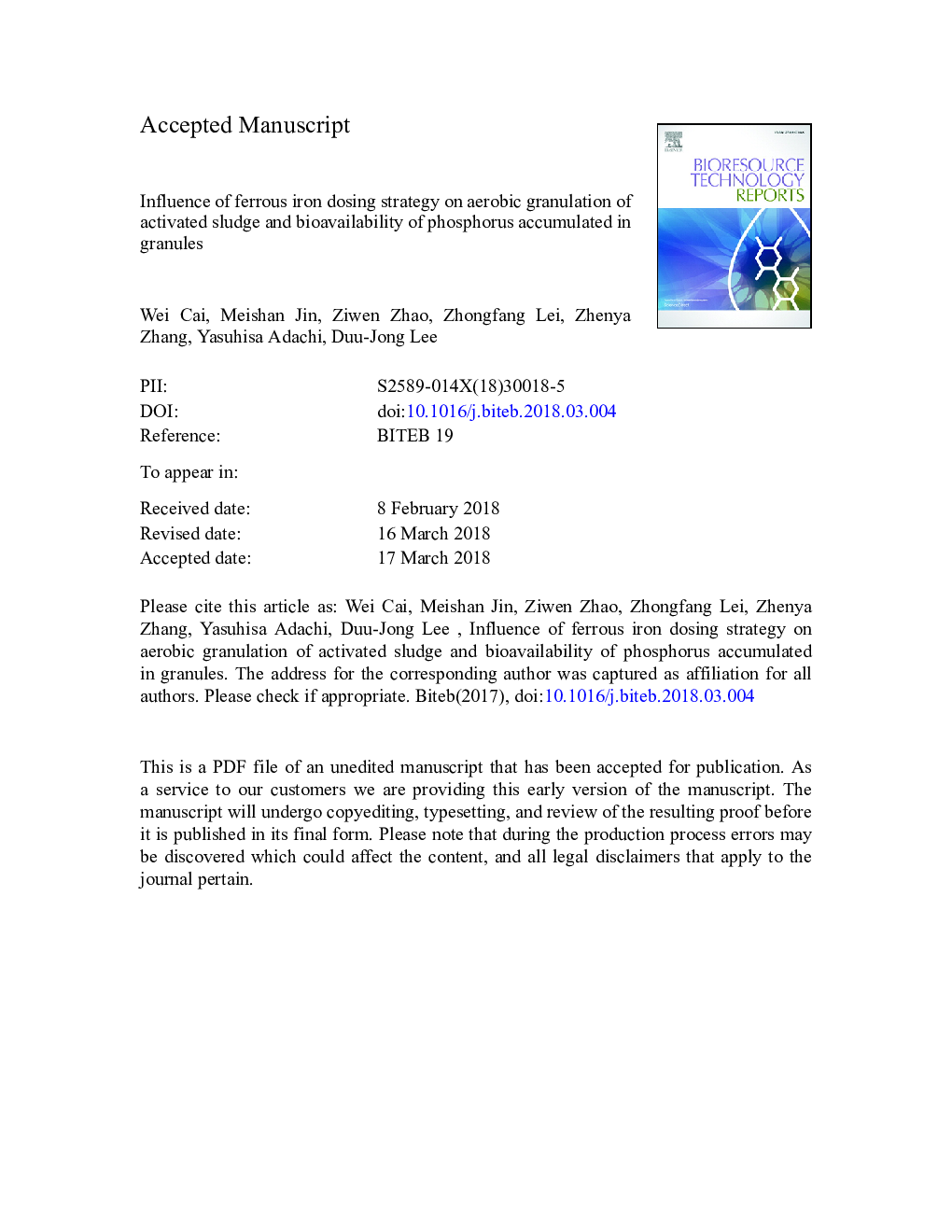| Article ID | Journal | Published Year | Pages | File Type |
|---|---|---|---|---|
| 6482540 | Bioresource Technology Reports | 2018 | 31 Pages |
Abstract
Two different Fe2+ dosing strategies (with the same daily Fe2+ dosage of 19.5 mg/d), i.e. constant (R1 with fixed 5 mg Fe/L in influent) and pulse dosing (R2 with 30 mg Fe/L in influent only during the first cycle every day) were tested in two identical reactors and their comparison was conducted on granule formation, stability and performance on pollutants removal and P accumulation. Results showed that granules appeared earlier and relatively smaller in R2 (day 9), while biomass increased faster in R1. Relatively high and stable P removal could be achieved, averagely 92% in R1 and 81% in R2. The granules in R1 accumulated more P (45.6 mg/g-SS) with higher bioavailability (95%) after 48 days' operation, especially with high non-apatite inorganic P content (36.2 mg/g-SS). This work also suggests that Fe2+ dosing strategy can be applied in conventional activated sludge processes when high bioavailable P recovery is targeted.
Related Topics
Physical Sciences and Engineering
Chemical Engineering
Bioengineering
Authors
Wei Cai, Meishan Jin, Ziwen Zhao, Zhongfang Lei, Zhenya Zhang, Yasuhisa Adachi, Duu-Jong Lee,
